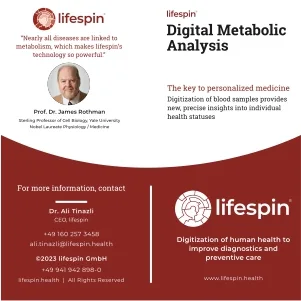Hernias are a surprisingly common health issue that can affect people of all ages. At their core, hernia occur when part of your internal organs decide to push through a weak spot or opening in the muscle or tissue that typically holds them in place. This can happen almost anywhere in the body, leading to different types of hernias with their unique characteristics. While hernias can occur in anyone at any age, adults are at higher risk, particularly those who engage in activities that place strain on the abdominal muscles.
Here, we’ll delve into hernias, exploring their various types, and the need for awareness to manage them better.
Various hernia types affect different body parts.
Dr. Daniel Guerron, Staff Physician in the General Surgery department at the Digestive Disease Institute who is also the director of the Comprehensive Core Health and Hernia Treatment Center at Cleveland Clinic Abu Dhabi, comments, “In essence, hernias come in various forms, each with its unique characteristics and implications. Recognizing these differences not only aids in early diagnosis but also enables individuals and healthcare professionals to make informed decisions regarding treatment and management. It is a testament to the complexity and diversity of the human body, showcasing how medical science continues to evolve to address the intricate challenges posed by hernias of all types.”
Among the most prevalent is the inguinal hernia, accounting for a significant majority and predominantly affecting men. This type manifests when a section of the bowel protrudes into the inguinal canal, nestled within the inner thigh. It’s a condition that often necessitates surgical intervention for relief and restoration.
Femoral hernias are less common but equally deserving of attention. These hernias find their location within the femoral canal, lying just beneath the inguinal canal. Notably, they may even involve the protrusion of fatty tissue, a characteristic that distinguishes them from their counterparts.
Moving away from the lower abdomen and groin, we encounter the hiatal hernia. Unlike the others, this hernia ventures into the realm of the upper body, specifically the chest. It arises from a widening of the diaphragm’s opening, which typically houses the esophagus. Consequently, the upper part of the stomach takes an unexpected journey into the chest cavity, creating discomfort and the potential for digestive issues.
Among the more sobering instances is the congenital diaphragmatic hernia (CDH), a condition that begins long before birth. It represents a serious birth defect where the diaphragm’s closure during fetal development falls short of completion. This incomplete formation allows abdominal organs to encroach into the chest cavity, often resulting in a myriad of complications for the newborn.
Another category is the incisional hernia, a manifestation that stems from a weakened abdominal wall, typically the result of previous surgery. In a twist of irony, the very incision meant to heal ends up becoming the gateway for tissue to protrude through, necessitating further surgical attention.
Umbilical hernias, on the other hand, frequently have their roots in infancy, with most being present from birth. These hernias make their appearance near the belly button, where a portion of the intestine seeks an unconventional path through a weakened section of the abdominal wall. Although common in childhood they often resolve on their own but may require intervention if the issue persists. Ventral hernias incorporate a broad spectrum of hernias that manifest through the front wall of the abdomen, encompassing both umbilical and incisional hernias. Within this category, the epigastric hernia claims a distinctive position, emerging above the belly button and offering its unique set of challenges and considerations.
Last is the perineal hernia, a rare occurrence deserving special mention. These hernias defy convention, as organs or tissue find their way through a weakness in the pelvic floor, journeying into the abdominal cavity. Such rare instances require meticulous evaluation and surgical intervention.
Also Read: Epilepsy awareness: Navigating the waves of the ‘lightning storm’
These can occur gradually as one gets older and can result from an injury, surgery, or a birth disorder. It is important to note that most hernias eventually will need surgical repair.
In summary
For those dealing with a hernia or patiently waiting for surgery, here are some valuable tips to keep in mind.
First and foremost, listen to the advice of your healthcare providers and try to avoid activities that could put unnecessary strain on your hernia. Keep an eye out for any changes in your symptoms or any unexpected discomfort. If your hernia starts acting a bit peculiar—changing colors, feeling numb, or causing you some distress like fever, nausea, or even a little vomiting—don’t hesitate to reach out to your healthcare team. Understanding hernias, their types, risk factors, symptoms, and advancements in surgical techniques is essential for informed decision-making and proactive healthcare. With knowledge and the correct guidance, individuals can navigate the world of hernias with confidence, knowing that effective treatments and a faster road to recovery are within reach.














